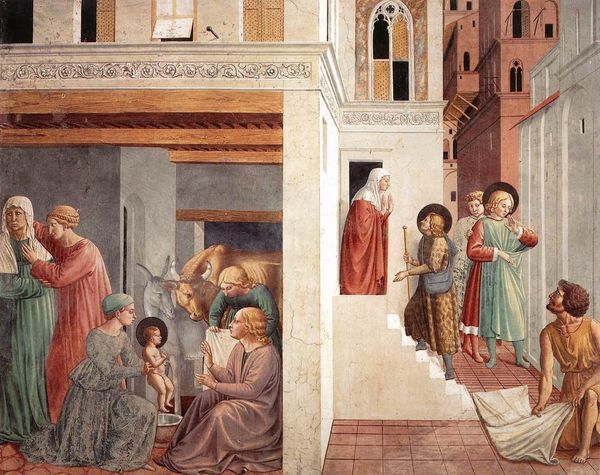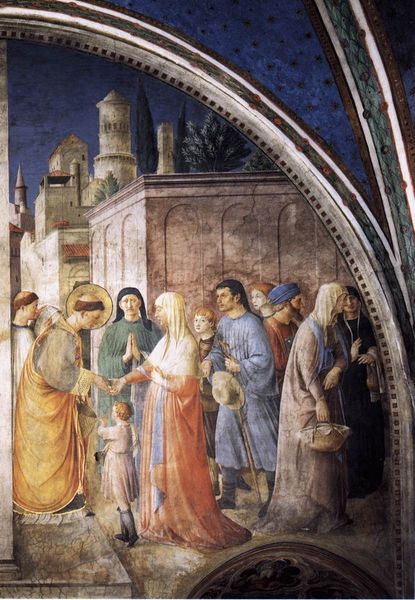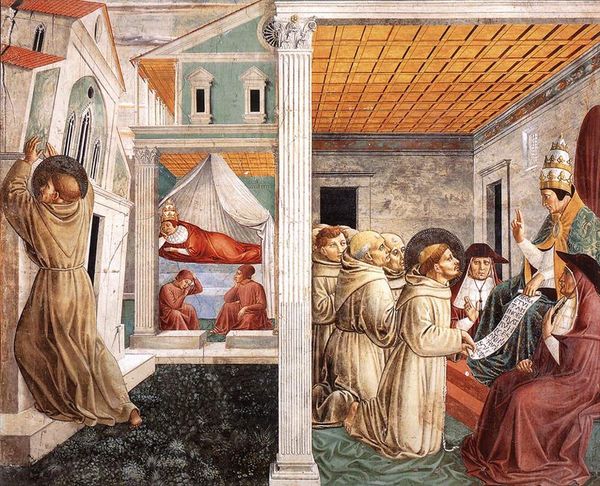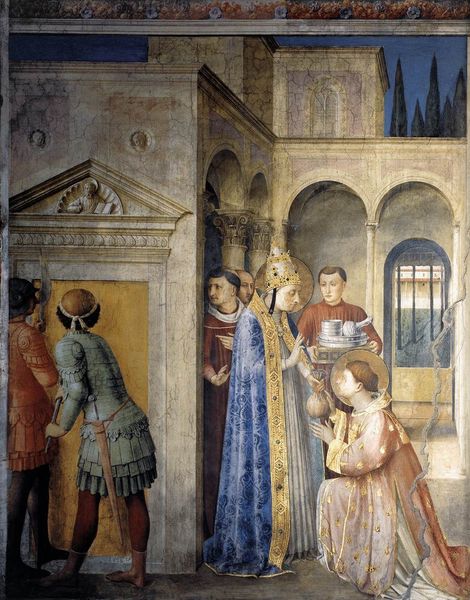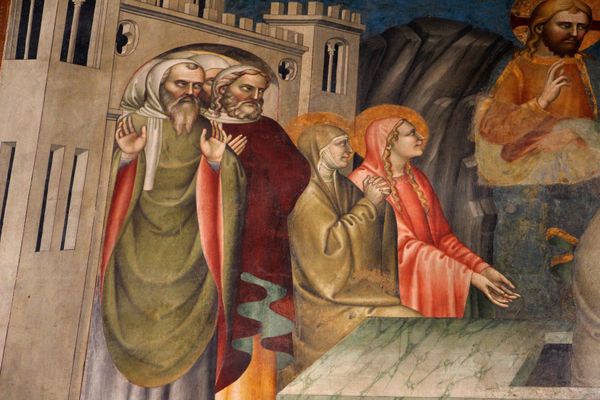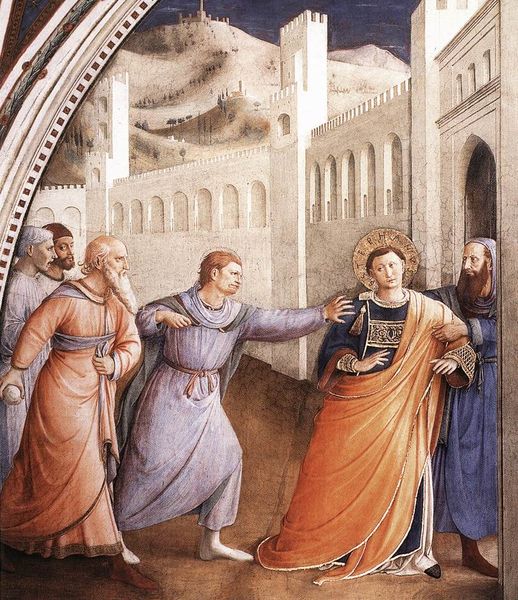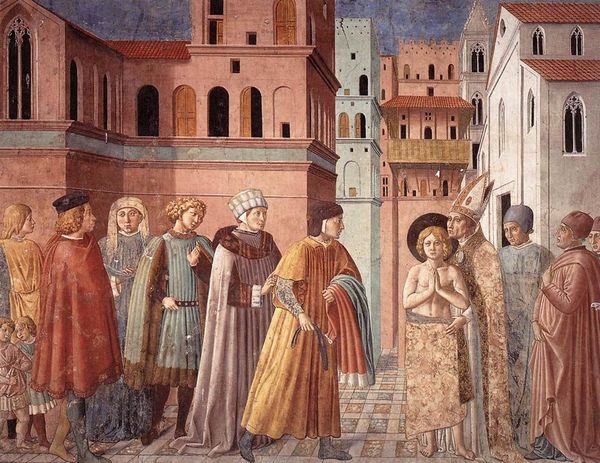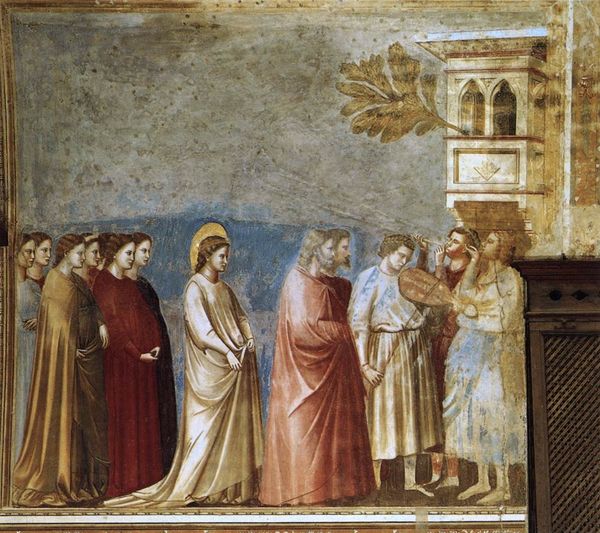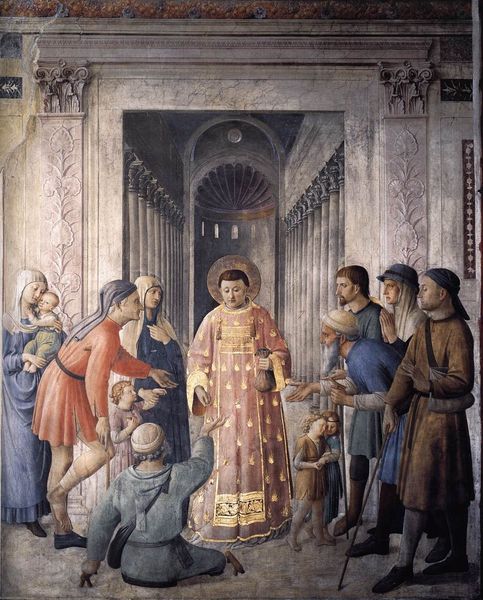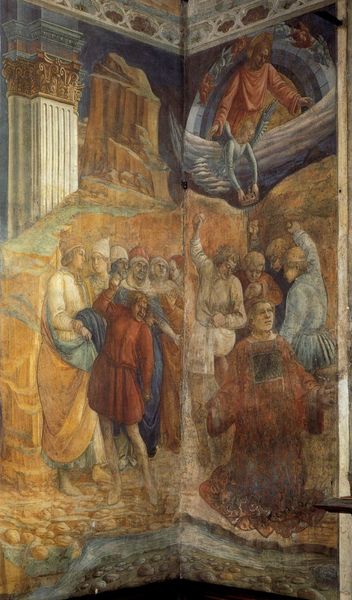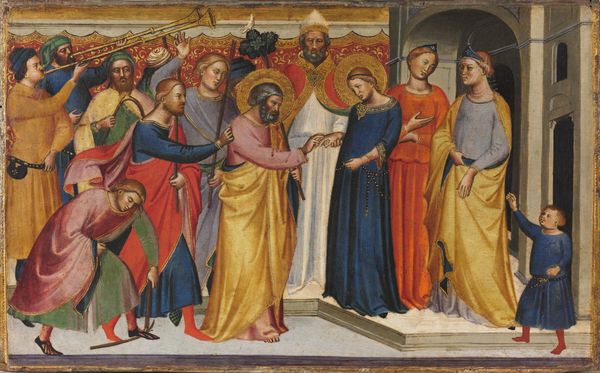
Birth of St. Francis, Prophecy of the Birth by a Pilgrim, Homage of the Simple Man (detail) 1452
0:00
0:00
tempera, painting
#
portrait
#
narrative-art
#
tempera
#
painting
#
figuration
#
oil painting
#
christianity
#
painting painterly
#
history-painting
#
italian-renaissance
#
early-renaissance
#
portrait art
Dimensions: 304 x 220 cm
Copyright: Public domain
Curator: So, this section showcases a fragment from Benozzo Gozzoli’s work, painted in 1452. It’s part of a larger fresco cycle depicting "The Birth of St. Francis, Prophecy of the Birth by a Pilgrim, Homage of the Simple Man," executed in tempera. Editor: Ah, right. I'm struck by the rather odd lighting and the overall dreamy feeling, it looks like a stage. Curator: Indeed, the stage-like composition directs our attention to the characters and their roles. The fresco technique demanded quick application, leading to a certain simplification of forms, especially noticeable in the drapery. Gozzoli and his workshop, had to think in advance and transfer quickly. Editor: Those figures! They're arranged like a tableau. The muted colors add to this aura of… holy patience. I mean, is it just me, or does that pilgrim climbing the stairs look a little weary? Curator: Consider the societal function: this was religious instruction via visual storytelling, deeply rooted in Early Renaissance aesthetics. We also need to account for the patrons’ aspirations for this artwork. Patrons dictated subjects and chose materials like the vivid ultramarine, ground from costly lapis lazuli. Editor: True, but imagine the actual artist laying down the pigments and considering that interaction! Was it also an expression of faith? To me, this isn’t just about depicting the birth of St. Francis; it's more a question of devotion materialized, through laborious art. I mean, could that cloth really be any whiter? It practically glows. Curator: It represents wealth, privilege, religious patronage expressed with colour and costly resources to project certain message... Editor: I think that sometimes artists subvert material conditions to infuse their art with something uniquely soulful! What’s left today whispers across all these ages and classes, if we can let it... So while your analysis grounds the fresco, I love to be reminded of the enduring artistry and imagination. Curator: Of course, what the artwork communicate today to viewers remains relevant, even beyond it original purpose and condition.
Comments
No comments
Be the first to comment and join the conversation on the ultimate creative platform.
